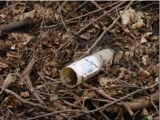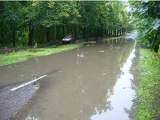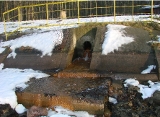The “Arturowek” complex of ponds is a recreational site for inhabitants of Lodz. Unfortunately the anthropopressure deteriorates quality of water in the reservoirs thus they cease to perform one of their key functions, i.e. recreational, for which they have been established. Sites of illegal point sewage discharge and of direct inflow of rainwater an snow-melt have been identified in the Bzura river and the reservoirs, and they determine quality of the Bzura and Arturowek ponds’ water.
 |
 |
 |
 |
The “Arturowek” complex of ponds is a recreational site for inhabitants of Lodz. Unfortunately the anthropopressure deteriorates quality of water in the reservoirs thus they cease to perform one of their key functions, i.e. recreational, for which they have been established. Sites of illegal point sewage discharge and of direct inflow of rainwater an snow-melt have been identified iIt is quite obvious that household sewage discharged into the water significantly deteriorates its quality, however only few people are aware of the scale of the risk to the water ecosystems posed by discharge of rainwater and snow-melt from urban areas. Sealing the surface of the urban catchment interferes with the natural circulation of water and matter in this territory. In a consequence, the urban areas have to cope with the problems of flooding, draught periods, and a larger load of pollution incoming to the water with surface run-off in particular. Due to this, multiplied quantity of nutrients incoming directly to the rivers and reservoirs contributes to their reduced resistance and capacity of flexible response. the Bzura river and the reservoirs, and they determine quality of the Bzura and Arturowek ponds’ water.
 |
 |
| normalny stan | stan wód po opadzie |
The performed analyses indicated that rainwater and snow-melt running-off from Wycieczkowa Street supply Arturowek reservoirs with significantly more pollution (suspension and phosphorus compounds in particular), which results in deteriorating water condition observed in the summer period in the form of cyanobacterial blooms (Fig. 1.). Other harmful pollution incoming to the recreational reservoirs with rainwater and snow-melt includes heavy metals, petroleum derivative compounds and dioxins.

Key: BN- the Bzura below the Lower Pond; AD – Lower Arturowek; AŚ – Middle Arturowek; AG – Upper Arturowek; BP – the Bzura above the Upper Pond; BP – the Bzura below Wycieczkowa St.; W – Wycieczkowa St.; BPW – the Bzura above Wycieczkowa St.; UŁ – University of Lodz Pond
Fig. 1. The average TP and TN concentrations, including incidental events (snow-melt, atmospheric precipitation) in comparison to the seasonal average recorded in 2010 and 2011.
A significant quantity of pollution getting into surface water is accumulated in water sediments of the rivers and reservoirs. Due to its low solubility, long persistence and hydrophobicity, such substances are easily absorbed on the surface of small particles of the matter. As a result, the sediment may become a source of the so-called secondary pollution of water caused by re-suspension.
Other immediate threats to “Arturowek” reservoirs include feeding water birds, baiting fish by anglers, bathing pets or using bathing sites as toilets. As a result, the water is supplied with nutrients for aquatic organisms (nitrogen and phosphorus compounds) which contribute to eutrophication of water bodies. Every kilogram of phosphorus in the reservoir produces 1-2 tons of algae biomass in water, and its occurrence excludes the polluted reservoir from its recreational use. Presence of water birds in “Arturowek” reservoirs contributes not only to pollution by nutrients (calcium and magnesium phosphates in particular), but also by faecal coliforms.


